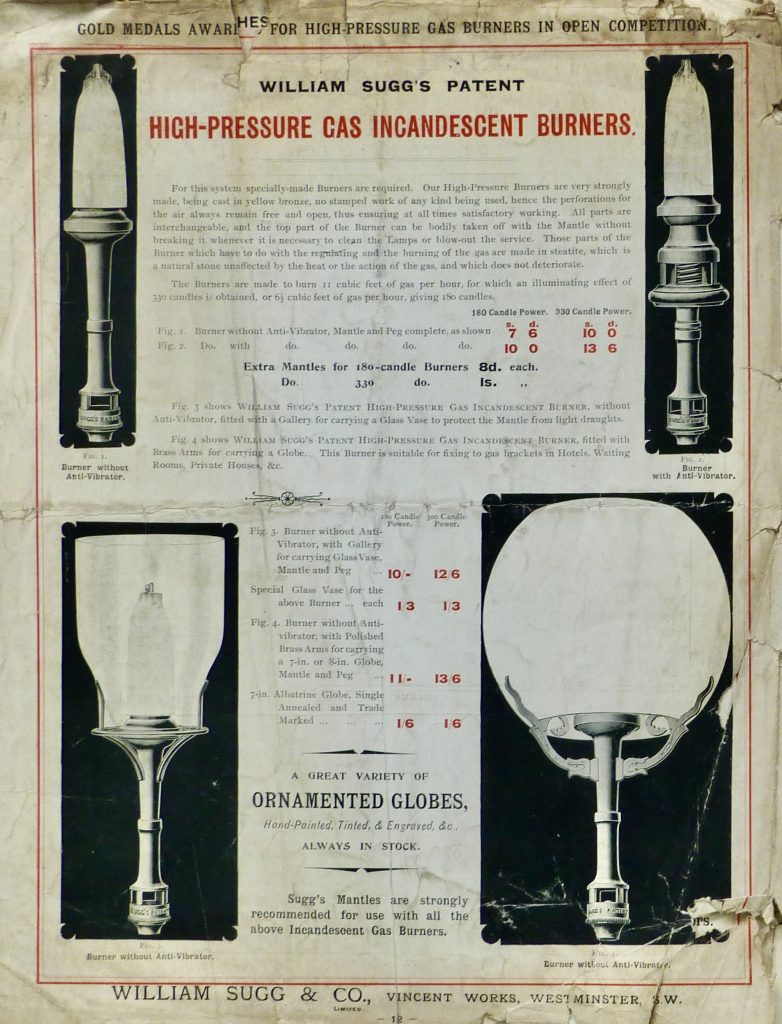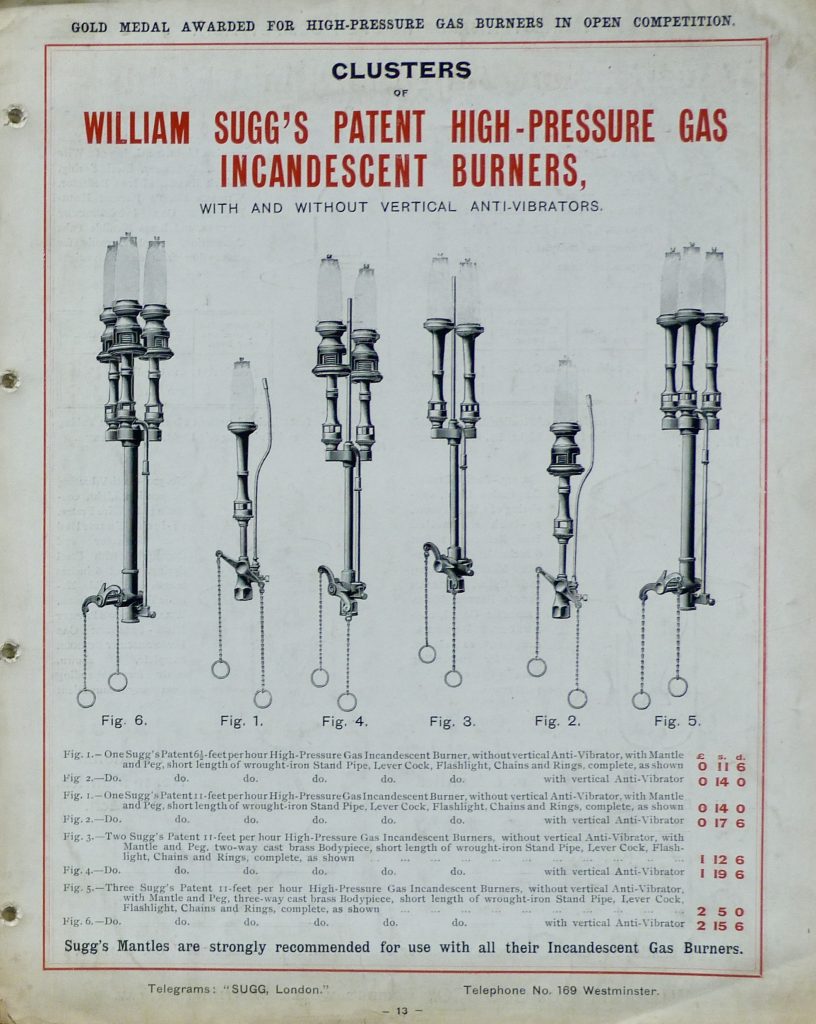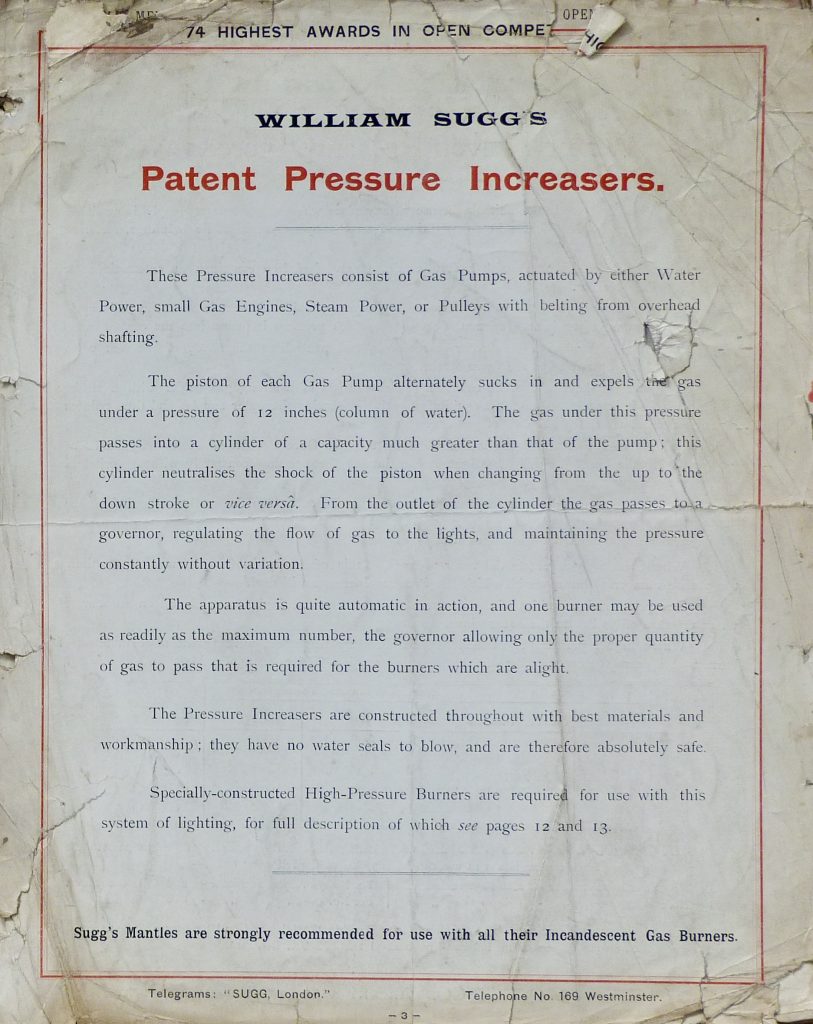The advent of the incandescent mantle spurred William Sugg to see if he could improve on this new technology that all his competitors were also introducing so that he could claim even better performance advantages and remain at the forefront of gas lighting, especially now that electric lighting was gaining followers. In classic fashion he almost certainly worked in his home workshop doubtless to avoid being interrupted before presenting it to his colleagues in the factory.
The ‘normal’ gas pressure of town gas was provided by the weight of the gas holder which was raised by gas pumped in from the gasworks. Because of the large variation in gas usage between night and day, especially with gas lighting being the major use for gas, the gas holder had been developed to allow for the continuous production of gas to be stored during the day, ready for use at night. However, the actual pressure was only about 2.1/2″ w.g. or around a quarter of what it is with natural gas today.
The pressure of gas issuing from the jet in the aeration chamber affects the amount of air drawn in through the aeration ports. There is a lot of engineering that goes into the design of gas/air mixing and the pressure is just one. The internal shape of the chamber, the number and size of the aeration ports and the position of the ports in relation to the tip of the jet or ‘injector’ are all critical to getting the best performance. Whilst the mantle is also critical to the performance, the aim is to fill the mantle with the hottest consistent mix of gas and air to the whole surface. The shape of the mantle is another aspect of the performance, so we have a really complicated set of variables to achieve the best result!
As a reminder, the invention of the mantle was largely a chance encounter between a puddle of chemicals that Count Auer von Welsbach had been working with, a piece of absorbent material and the flame of a bunsen burner. The coincidence which Welsbach noticed was a flash of bright light that came from the material that had picked up the chemical mixture as it passed across a flame. The problem was to repeat the process with the most complicated part being to rediscover the chemical composition of the mixture that ‘incandesced’ from the chemicals that Welsbach had been working with – and in what quantities. Thousands of experiments to find the best chemical mixture with countless others in the search for the best material and all the others already mentioned in the previous paragraph.
The time we are talking about is before the inverted mantle, indeed it is only just after the upright mantle was becoming a practical item and not quite as fragile as the earliest ones. You will see, however, that several of the burners are shown with what is called an Anti-Vibrator option which was developed to reduce vibration especially in street lights. You can also see the very different aeration arrangement from the low pressure burner type.

These two pages from the Sugg literature archive are somewhat tired but as they date to about 1905 and have been unearthed from various old collections, it is not surprising. The high pressure burners are quite short lived in the world of gas lighting, so it is important to record them here.

Pressure Increasers
William Sugg developed several methods for increasing the gas pressure and this is the introductory page. You will see that 4 different methods are listed to cover all eventualities. The complexity of these pieces is considerable and must have taken a lot of time to develop.

The Pressure Increasers have their own section under the Technical heading rather than here with mantles and burners. This link will take you there.
